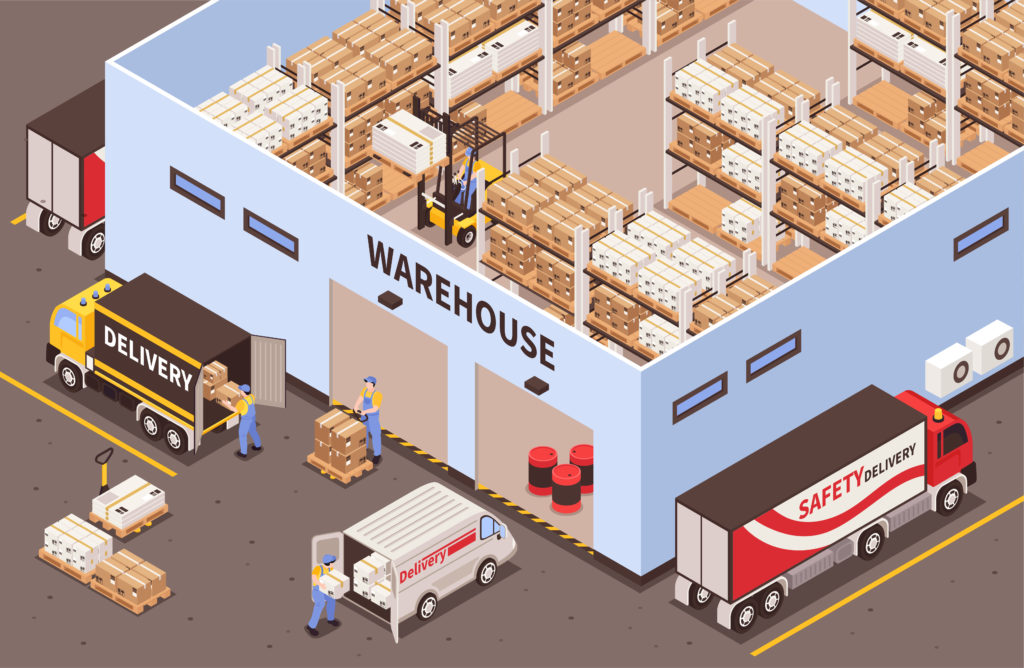Reasons Why Your Warehouse May Need a WMS

In this article we’ll be discussing the most common high-level reasons that drive warehouse management system adoption. Not specifically benefits or answering the age old “why WMS?” question, which we’ve covered in a few articles and most recently here, but we’ll go over the main business reasons that often push warehouse managers to adopt a WMS.
Your company is consolidating warehouse operations or even better, a brand-new facility is being brought online. Take advantage of the clean slate that a fresh site affords, as you don’t have to worry about costly downtimes, wrangling with data backups, or cantankerous users griping about “the good old pre-system days”. There should be no compatibility issues with hardware working with the new system, as everything will be brand new purchased for the new WMS and not dusty old legacy equipment. The go live at a brand new facility will also be much less nail-bitey and cheaper than if it were at an established warehouse, as the latter is running full-bore and the implementation has to be planned so as to not interrupt daily operations.
The warehouse staff and systems in place can’t handle the rapid growth that your operation is experiencing. The requirements behind tens of millions of inventory movements shipping out to a large group of customers is too much for the trial version of Irving’s “Pocket Whse” App v3.7, which you have been able to skate by with for so long, and certainly a pen-and-paper system isn’t going to get the job done. Just keeping up with the reporting demands alone is a tall order. A very small warehouse with only a few customers and a handful of products can possibly – maybe – get away with not using a WMS, but warehouse personnel at a serious warehouse or distribution center should be focused on actually moving inventory and not figuring out by hand where it needs to go. Warehouse managers should also be strategizing with WMS dashboards to help keep the growth train chugging along, rather than wasting time with inventory discrepancies that are more likely with a ramshackle warehouse management system that is not up to the task. If the increased growth also causes your warehouse to be busting at the seams, the space utilization improvements afforded via WMS allows for higher throughputs in the same storage areas.
Automation in the warehouse, including things like autonomous guided vehicles and robots, work in concert with a WMS as it houses the requisite data needed for them to perform their duties. A robo-picker requires pick list data in order to know what inventory to get, an AGV moving products to bins needs to know the warehouse layout, etc…If you are looking to beef up warehouse automation then you will need a WMS.
Complex and intricate customer compliance requirements can be difficult for warehouse personnel to handle without a warehouse management system. The WMS smoothly handles EDI data compliance, label and packing list specifications, inventory and picking segregation requirements, as well as any required inbound/outbound quality checks.
The distribution world becomes more “omnichannel” every year. Omnichannel fulfillment involves picking and shipping products across various outlets including stores, sales channels, and e-commerce sites. E-Commerce (which these days is pretty much “commerce”) is basically becoming more Amazon-ish and not being as simple as the old school model of “ship from one location to another”, a more complex and robust setup on the backend (like a WMS) is required to support it.
A major catalyst for getting a warehouse management system is the endless quest for overall operational optimization and cost reduction in the face of increasingly tough competition. Warehouse managers want to reduce errors, fulfill orders more rapidly, increase visibility, and reduce cost. Distribution costs will continue to rise, and the long-term benefits of a WMS can help offset them, and every edge matters as the competition only gets fiercer.
Has your team noticed any signs that it’s time to consider getting WMS? Drop us a line and we’ll try to help
This post was written by:

James Prior Sales Ops Manager James has been working in software pre-sales and implementation since 2000, and more recently settled into working with a pre-sales team and occasionally writing blog posts. Drop him a line at: james.prior[at]tryonsolutions[dot]com.
Recommended Content
SLA Optimization Worksheet
Enhance your service level agreements (SLAs) with this SLA Optimization Worksheet. Use it to assess your current systems, identify gaps, and create a roadmap for improvement. Includes actionable steps, KPIs, and next steps to boost efficiency and customer satisfaction.
Optimizing Layer Picking Efficiency for Large Global Company
A large global company optimized its automated layer picker, reducing manual layer picking by 70% through seamless integration with Blue Yonder WMS and Robotics Hub. Tryon Solutions developed API endpoints, real-time reporting, and a pick face manager to enhance...
Digital Transformation: The Key to Meeting Customer Expectations
In today’s fast-paced retail environment, customers expect seamless experiences whether shopping online or in-store. Shipped-to-home orders, in-store pickups, and last-minute changes are now the norm. However, many businesses struggle to meet these demands due to...
Tryon Solutions for Test Management
At Tryon Solutions, we design tailored Test Management strategies that help you proactively identify failures and streamline testing processes. Our expertise ensures your systems are reliable, safeguarding your operations from costly downtime. Download the brochure...
When to Hire a WMS Consultant
Your Warehouse Management System (WMS) is at the core of your supply chain operations. As the demands on your warehouse evolve, ensuring your WMS is future-proof is critical to maintaining efficiency, meeting customer expectations, and staying competitive. But when is...
